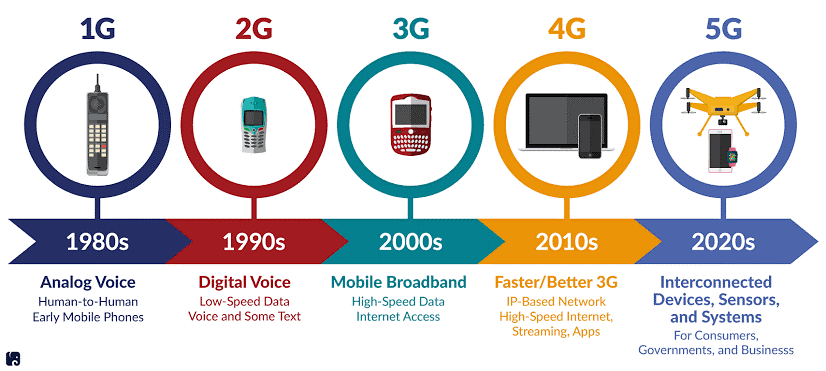Patty Anderson, VP Critical Environments, BGIS
Telecommunications companies need to move fast to adapt to emergent 5G technologies. 5G will be the dominant mobile broadband format as 4G subscriptions will decrease from 68% of mobile subscriptions in 2021 to 55% in 2027, and subscribers will migrate to 5G. (Editor, 2021). We can see the advancement in the illustration below as the 1980’s Analog voice devices move to Interconnected devices and equipment being utilized in personal and business today, as well as into the future.

New technologies and emerging technology companies demand edge-technology facilities to get their technology closer to the consumer to decrease latency and increase local storage, processing, and security capabilities. Edge computing is a distributed information technology (IT) architecture in which client data is processed at the network's periphery, as close to the originating source as possible. This helps address important infrastructure limitations such as bandwidth, latency and network congestion. The traditional computing paradigm built on a centralized data center and everyday internet isn't suited to moving continuously growing rivers of real-world data. In simplest terms, edge computing moves some portion of the storage and compute resources out of the central data center and closer to the source of the data (or consumer) itself. (Bigelow, 2021)

Cloud computing companies, autonomous vehicles, and artificial intelligence will only continue to drive edge computing and the increase of pushing the need to support processing needs closer to the consumer. As an example, consider the rise of self-driving cars. They will depend on the intelligent traffic control signal and the communication of multiple connected devices. Cars and traffic controls will need to produce, analyze and exchange data in real-time. Multiply this requirement by vast numbers of autonomous vehicles, and the scope of the potential problems becomes clearer. This demands a fast and responsive network. (Bigelow, 2021) Edge computing helps cut latency and network congestion, making it essential to the operation of any complex, intelligent system.
BGIS provides Critical Environment and Facility Services to telecommunications companies and Edge Technology companies Supporting the growth of 5G networks resulting in renovation, expansion, and new build projects.
For more information contact Patty Anderson, VP, Business Development [email protected]
References
Bigelow, S. J. (2021, December 8). What is edge computing? everything you need to know. SearchDataCenter. Retrieved March 10, 2022, from https://www.techtarget.com/sea...
Editor, I. (2021, December 2). 5G technology: INSIGHTSIAS. Retrieved March 10, 2022, from https://www.insightsonindia.co...

